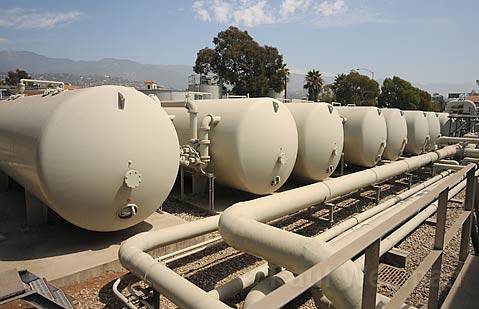Cost Creep Lurks Over Desal Plant
Estimate to Restart Mothballed Facility Climbs from $32 Million to $40 Million

Santa Barbara’s acting water czar Josh Haggmark warned the City Council it might cost as much as $40 million to restart the city’s desalination plant as opposed to the $32 million he estimated in September. Haggmark stressed it was still too soon to say, but he argued that because of the limited time for the council to set new water rates needed to recoup the costs of desalination, it would be safer to assume the higher amount. That figure does not include the additional $5 million a year it will cost to actually operate the plant. Barring heavy winter rains, the council is poised to sign a contract to restart the desal plant next April in the hope it would be operable the following summer. But weather forecasts, Haggmark said, gave little hope for heavenly intercession.
Haggmark didn’t have a lot of chirpy news to deliver during his monthly drought update to the council. Water customers managed to hit their 20 percent conservation mark this October, but that’s still lower than the 24, 25, and 26 percent conservation savings achieved in the prior three months. October, he explained, proved exceptionally hot. The good news was that Lake Cachuma is not being drawn down even faster than it is, meaning that the emergency pumps required to lift the water up and into the shipment portals have not been needed yet. The bad news is dam operators have to continue releasing 10 acre-feet of water a day for the preservation of the federally endangered steelhead. “That’s enough water in one day to provide for 30 families in a year,” Haggmark noted.
In addition, six of the city’s nine wells are currently nonoperational. For some, a relatively quick fix will do the trick, but others, like the Alameda Park well, is done for. To replace it will cost another $2 million. That’s on top of the $3.5 million City Hall has set aside to buy surplus state water next year, if there is any. Public interest in replacing lawns with drought-tolerant landscaping has accelerated five-fold between August and November compared to the previous year, and there’s been an 8 percent drop in the amount of toilet water flushed in October from the previous year, suggesting the rest of the conservation savings came from landscaping. In the meantime, city parks workers have been hand watering 1,300 trees, up from 660 previously.



